Brooklyn Animal Shelters Face Overcrowding Crisis
Local experts say they can’t adopt their way out of the impasse, and large-scale change is needed.

Lindsay Branch, Director of Community Programs at Flatbush Cats, holds three kittens in the organization’s vet clinic. Photo by Kirstyn Brendlen
By Kirstyn Brendlen, Brooklyn Paper
Brooklyn’s animal shelters are facing a crisis: There are too many animals in need of a home, and not enough adopters. Shelters are overcrowded, rescuers are working overtime, and a break seems unlikely.
Local experts say they can’t adopt their way out of the crisis, and large-scale change is needed. Some zeroed in on one of the primary causes of the issue: the high and ever-rising cost of veterinary care.
“I think it’s basically tied into the larger affordability crisis that we’re seeing right now,” said Will Zweigart, founder and executive director of Flatbush Cats and Flatbush Vet.
Pet care costs rise, and adoptions fall
The cost of veterinary care in the U.S. has increased by 60 percent over the past 10 years, according to the New York Times, and has outpaced inflation.
According to MarketWatch, the average cost of a routine vet visit in New York is $84.72 without vaccinations, tests, or other treatments — which can easily stack up to mean an annual visit for a healthy pet runs more than $100.
“If you think about what we’ve been telling folks for decades about the responsibility of being a pet owner, we’ve told folks ‘If you can’t afford to care for a pet, you shouldn’t get one,’” Zweigart said. “Well, they were listening.”
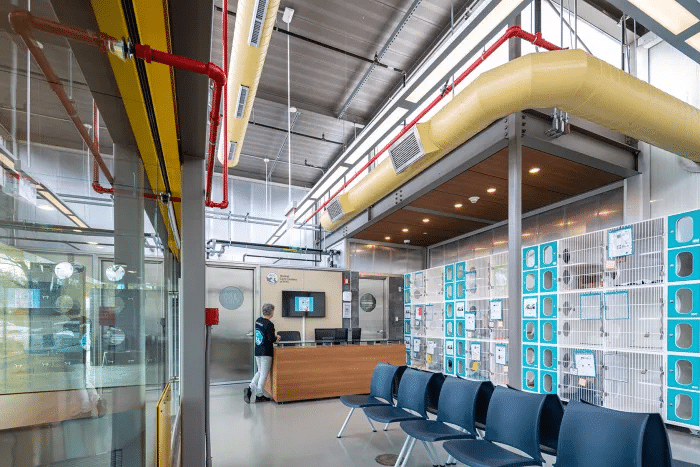
Animal Care Centers of New York, the city’s largest animal shelter, took in 7,440 animals between January and May 2024, according to their latest board meeting materials — a 33 percent increase from the same period in 2021. That month, ACC facilities were stretched far over capacity, housing 169 more dogs than is considered “ideal” and 51 more cats.
The trend continued in August, when the shelter took in 1,000 new animals on top of 800 already in its care, according to an August 23 newsletter.
Katy Hansen, Director of Marketing and Communications at ACC, said most people who have surrendered their pets to the shelter recently have cited housing issues. Finding an apartment that accepts pets, especially dogs, can be difficult and expensive.
“I don’t think people just move because they suddenly become rich,” she said.
Pet owners earning less than $75,000 per year struggle the most to afford pet ownership, according to a 2024 report by Hill’s Pet Nutrition, and are the most likely to surrender their animals. The average yearly income in New York City is $74,694, according to U.S. Census data, and $73,951 in Brooklyn.
Roughly 75 percent of the animals taken in at ACC between January and May were not spayed or neutered, Hansen said. That could mean those animals hadn’t received much medical care at all, since most vets recommend the surgery at around six months of age.
While intakes are up at ACC, adoptions are down or stagnant. In the first five months of 2021, 94 percent of dogs at the shelter were adopted or placed in other care. During the same period this year, just 88 percent of dogs were placed. The placement rate for cats has risen slightly — but so has the number of cats in shelter.
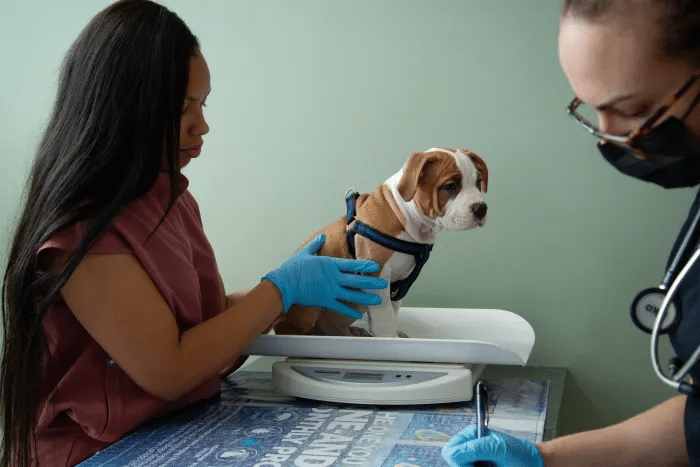
The Hill’s report found that the overall cost of pet ownership is one of the largest barriers for potential adopters, and 84 percent of respondents said veterinary care was the most expensive part of pet ownership.
Of people who had been forced to surrender their pets, 25 percent said access to free or affordable vet care would have allowed them to keep their animals. Another 20 percent said they would have benefited from financial support for health issues.
“Access to affordable vet care, the cost of housing, and even the cost of food has impacted family’s ability to keep their pets,” ACC said in its August newsletter. “The same financial pressures that lead people to surrender their pets are the same ones preventing potential adopters from adding a pet into their home.”
Recent studies have found that more than 40 percent of pet owners in the U.S. are “very” or “fairly” concerned about being able to financially support their pets, and 37 percent said they would struggle to afford a basic operation for their animal. About one-third of pet owners reported avoiding the vet because they couldn’t afford it.
Nonprofit clinics struggle to keep up with demand
Zweigart founded Flatbush Cats in 2018 as a largely volunteer-run Trap-Neuter-Return effort in Flatbush, where he had observed a massive stray cat population. Within a few years, he realized the effort was “reactive,” he said, as they were helping cats who were already stray and suffering. He wanted to try to keep cats off the street at all.
So, last year, he opened Flatbush Vet – a clinic that offers low-cost basic veterinary services to pet owners and rescuers. Their services are limited — basic vet visits, vaccines, and spay/neuter surgeries – but crucial.
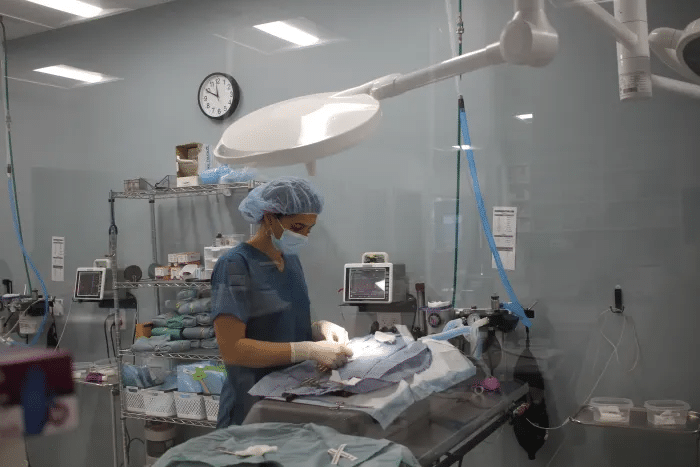
Basic exams for healthy cats and dogs start at $25. A “comprehensive exam,” for animals with minor medical concerns like ear infections, will run $50.
A healthy new kitten visit at Flatbush Vet will cost the owner about $100, per the clinic’s website – including an examination, two kinds of dewormer, a microchip, and necessary vaccines for rabies and feline distemper. Feline spay/neuter surgeries cost a flat $225.
The same visit at a regular clinic could cost more than $300, based on the average cost of various services, on top of up to $300 for a spay/neuter.
Zweigart said 70% of pets taken to Flatbush Vet for well visits are not spayed or neutered. The clinic has a “great” success rate in convincing people to move forward with the surgery.
“If there are financial concerns, we have sliding-scale options so we can work with folks,” Zweigart added. “We just need more of these [clinics.]”
The biggest financial concern for pet owners is emergency care, Zweigart said, when owners suddenly discover their pet needs an expensive surgery or treatment for a serious disease. But they’re also struggling to afford preventative services.
“The desire and demand is there, people do want to get services for their animals, and they are happy to be able to do so,” said Lindsay Brach, director of community programs at Flatbush Vet. “It’s just the difference between an affordable bill and one that is totally out of reach.”
Particularly in emergency situations, owners are expected to pay for the services upfront — if they can’t pay, they can’t provide lifesaving treatment for their pet. That can be “devastating” for owners and veterinarians alike, Zweigart said.
“It’s a moral distress for them, because they got into this field for animals, and they’re seeing animals put down due to financial constraints,” he said. “It leads to vets leaving the field, which leads to shortages, which leads to higher costs and fewer appointments.”
Hansen said ACC is struggling to hire veterinarians, citing a “confluence of factors” including fewer vets overall and fewer vets willing to work in shelters.
The Brooklyn Bridge Animal Welfare Coalition started offering low-cost vet services in 2020, after most of the support that had been available to rescuers and pet owners dried up due to the pandemic, said executive director Anne Levin.
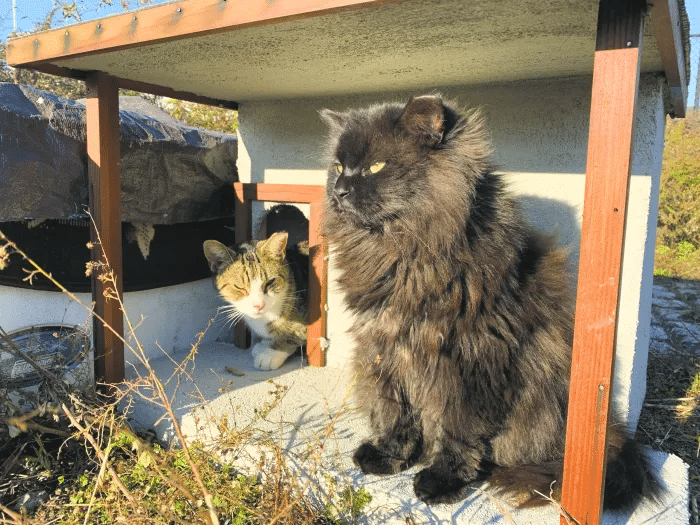
Initially, they were providing care out of a cleared-out room at the Brooklyn Cat Café, Levin said, and it took about a year and $200,000 for the organization to fully outfit its clinic. With just one full-time veterinarian and one part-time, the BBAWC clinic sees as many as 200 cats per week.
“For pet owners, we basically offer spay/neuter services and that’s it,” Levin said. “We can do a few things that you can do at the same time … But that’s all we do. We’re not doing exams, we’re not doing X-rays.”
A grant from G.S. Humane allowed the organization to buy its initial veterinary equipment, and they get some free vaccines through Petco Love. The operating cost of the clinic is covered almost entirely by the fees charged to clients, which they try to keep low — especially for rescuers.
Rescuers shoulder the burden of animal welfare
Individual rescuers and rescue groups are shouldering an undue burden in caring for New York City’s strays, Zweigart and Levin said. Nearly 500 rescuers are registered to receive discounted services at Flatbush Vet, and most regular veterinarians don’t offer discounts for rescuers.
“More and more vets are becoming privately owned and owned by venture capitalists, which means vets, instead of offering actual veterinary services and looking at what’s needed, they’re often paid based on what services they sell,” Levin said. “Which is really a disservice to people who have a limited income … and also to people who are rescuing and are doing anywhere from 10 to 100 to 1,000 spay/neuter surgeries per year.”
Sassee Walker is one of those rescuers. Since 2011, Walker has been caring for and saving stray cats in southern Brooklyn and around the city, and the effort costs her a considerable chunk of time and money.
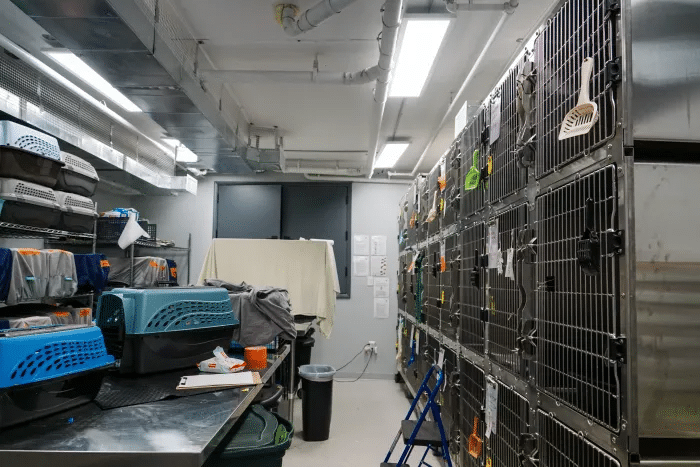
Several times a week, Walker, who works in the billing department at NYC Health + Hospitals during the day, feeds her regular feral cat colonies. Most days, she sees new cats there, she said — young kittens born to stray mothers or former pets who were dumped by their owners.
All day long, she receives calls from people who need help with ferals, whether they’re older Brooklynites who need help tending to their colonies or shop owners who have found themselves the unwilling hosts for needy cats. In less than a year, Walker has rescued about 600 cats, she said.
After work, or on her days off, she spends hours trying to trap those cats. Her apartment is stocked with cages and cat food, so the felines she does capture can stay there until they can see a vet. Walker brings her cats to organizations all over the city — BBAWC, Flatbush Cats, the ASPCA.
On top of the cost of the traps, food, and other supplies, there are the vet costs. Feral cats who can’t be adopted are always spayed or neutered, so they can’t procreate when they’re re-released. Many, whether or not they’ll be adopted out, require additional care — surgeries, vaccines, or other treatments.
“My cheapest bill is $20, that’s at the ASCPA, where I never get spots,” she said. “That’s the best one, because it’s $10 for the flea treatment and $10 for the microchip.” Spay/neuter surgeries and some essential vaccines are free for rescuers at the ASPCA.

Walker’s most expensive bills are for dental care, she said. Depending on how much work the cat needs, it can cost up to $600, she said, and roughly 60 percent of the cats she’s rescued this year have needed dental work.
“Once they write on the paper, ‘dental,’ I can’t put the cat back out,” she said. “I’ve had cats in my colony that died from a dental [problem] because I’m out there running around, trapping other cats, because I thought I had time … and they died a painful death.”
Affordable spay/neuter surgeries are particularly critical to curbing the population of feral cats and preventing more deaths. There are an estimated 500,000 feral cats in New York City, Levin said, and statistics show that a single cat can have up to 10,000 descendants over four years, 75 percent of which will not survive. Current shelter and rescue programs can only help a small percentage of those cats every year.
“The only way to end these cycles of suffering is to ensure that spay/neuter is increased for owned as well as homeless pet populations through both increased access (both geographical and economic) and through education about the suffering that is hidden in the alleyways, crawlspaces and backyards of the city,” Levin said in an email.
Advocates call on the city to subsidize vet care
It’s a “common misconception” that Flatbush Cats is government-funded, Zweigart said. In reality, most of their money comes from donations. For the past two years, Council Member Justin Brannan has awarded $150,000 of his City Council budget to the clinic — a small step in the right direction.
“To scale this model … the city needs to start chipping in on these upstream efforts,” Zweigart said. “With participation and leadership, we could build and open and operate several different facilities across Brooklyn, for example, that really provide more New Yorkers with veterinary care.”
Brannan, an outspoken animal-lover and chair of the City Council’s finance committee, said the city currently spends less than 5% of its animal welfare budget on “upstream” measures like spay/neuter.
The city’s Animal Population Control program is funded by annual dog registration fees and run by the city’s Department of Health and Mental Hygiene, which offers low-cost spay and neuters through the ASPCA. The health department did not return requests for comment.
The Mayor’s Office of Animal Welfare, created in 2019 through a bill Brannan introduced, is understaffed and underfunded, the council member said.
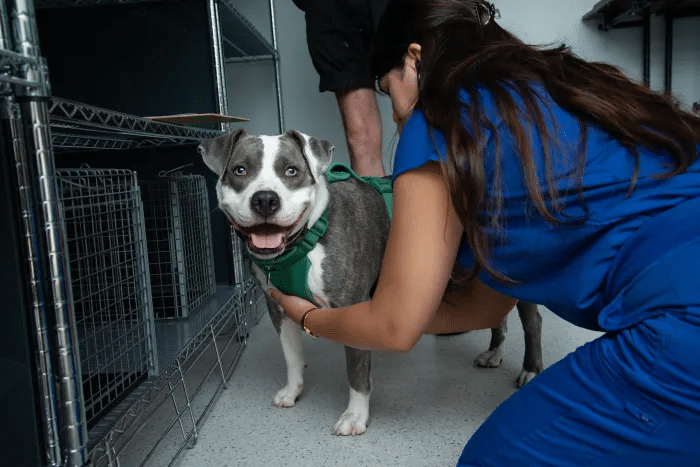
Additional funding has been piecemeal, Brannan said, mostly allocations from individual council members for individual clinics. He wants to drum up support among his colleagues to create a pot of money, maybe in the next city budget. Before then, the City Council was set to host a hearing that would address spay/neuter options on September 13.
“You’re not going to create a whole bunch of new clinics out of thin air,” Brannan said. “But you can certainly subsidize the existing groups that are doing this work. These groups are sitting around the kitchen table and they’re all pitching in to buy food and buy traps.”
It’s not quite clear how much money the city would need to spend to meaningfully increase access to low-cost vet care in New York City – but Zweigart estimated around $10 million per year.
“We’re going to spend the money either way,” he said. “We’re either going to spend the money trying to shelter animals that are suffering, or we’re going to spend it upstream.”
Levin said city funding could allow BBAWC to reduce its prices. The organization’s operating costs have gone up — drug costs have risen, they have to pay their vets more, and some products have become more scarce and more expensive — and those expenses have been passed on to clients.
“I’ve tried to keep it as low as I can for rescuers and people with low incomes, because I truly believe this is an important thing,” she said. “So we lose money.”
More access to cheap vet services, “would change me not being broke,” Walker said.
“And, I could help more,” she added. “This is the first time, in the last few months, that I’m actually restricting myself. I’m putting a cap on things, because do you know how embarrassing it is for a check to bounce?”
But scaling back means she can help fewer cats, and struggles to decide which cats are most in need of help.
Supporters say that over time, spending more money on subsidized vet clinics would allow the city to spend less on shelters and other “downstream” expenses. More access to spay/neuter alone would have a huge impact on lowering shelter populations, Hansen said.
Affordable vet clinics in every borough is key to keeping pets with their families and preventing animals from “flooding the city’s shelters every year,” Brannan said.
“They need to make that investment now so that five or ten years from now, their total spend will actually be less on a per-animal basis,” Zweigart said. “And this is all doable. We see all this doom and gloom, and all these challenging things – the thing that keeps me motivated is that this is absolutely a solvable problem. We just have to direct our resources in a more efficient way.”
Editor’s note: A version of this story originally ran in Brooklyn Paper. Click here to see the original story.
Related Stories
- A Gowanus Shelter for the Animals of Brooklyn
- Shop Cats of Brooklyn and Beyond Finally Get Their Due With New Book
- New Trees, Mature-Tree Care Help Green-Wood Cemetery Buck Climate Change
Email tips@brownstoner.com with further comments, questions or tips. Follow Brownstoner on X and Instagram, and like us on Facebook.









What's Your Take? Leave a Comment